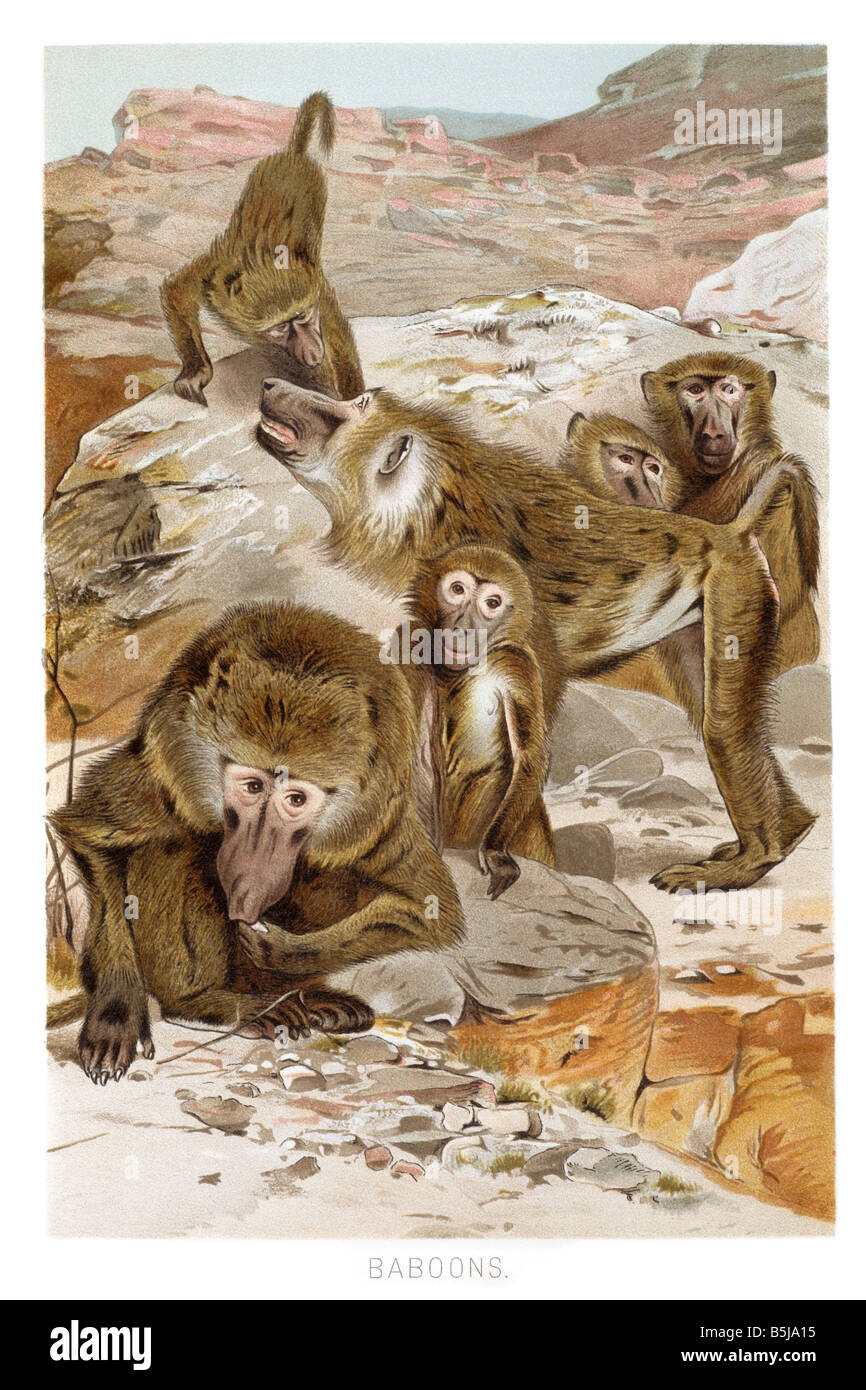baboons baboon African Old World monkeys monkey

Image details
Contributor:
Nat Hist Alan King / Alamy Stock PhotoImage ID:
B5JA15File size:
48.2 MB (2.3 MB Compressed download)Releases:
Model - no | Property - noDo I need a release?Dimensions:
3350 x 5025 px | 28.4 x 42.5 cm | 11.2 x 16.8 inches | 300dpiMore information:
Richard Lydekker 1849 1915 English naturalist, geologist writer book London Geological Survey India vertebrate paleontology northern India Kashmir fossil mammals reptiles bird Natural History Museum Manual Palaeontology Henry Alleyne Nicholson Wild Animals of Burma Malay Tibetr biogeography biogeographical boundary Indonesia Lydekker's Line Wallacea Australia-New Guinea Royal Natural History London Frederick Warne & co 1893-94 six volume baboons are African Old World monkeys belonging to the genus Papio, part of the subfamily Cercopithecinae. There are five species, which are some of the largest non-hominid members of the primate order; only the Mandrill and the Drill are larger. Previously, the closely related Gelada (genus Theropithecus) and two species of Mandrill and Drill (genus Mandrillus) were grouped in the same genus, and these Old World monkeys are still often referred to as baboons in everyday speech. They range in size from and weight depending on species, the Guinea Baboon is 50 cm (20 inches) and weighs only 14 kg (30 lb) while the biggest Chacma Baboon can be 120 cm (47 inches) and weigh 40 kg (90 lb). Five species of Papio are commonly recognized, although there is some disagreement about whether they are really full species or subspecies. They are P. ursinus (Chacma Baboon, found in southern Africa), P. papio (Western, Red, or Guinea Baboon, found in the far west of Africa), P. hamadryas (Hamadryas Baboon, found in the Horn of Africa and south-western Arabia), P. anubis (Olive Baboon, found in the north-central African savanna) and P. cynocephalus (Yellow Baboon, found in south-central and eastern Africa). Many authors distinguish P. hamadryas as a full species, but regard all the others as subspecies of P. cynocephalus and refer to them collectively as "savanna baboons". This may not be helpful: it is based on the argument that the Hamadryas Baboon is behaviorally and physically distinct from other baboon species.